Geographical Overview of Kilimanjaro
Kilimanjaro, the highest peak in Africa, is a majestic mountain located in northeastern Tanzania. It stands as a prominent symbol of natural beauty and adventure, attracting climbers and trekkers from around the world. The mountain is part of Kilimanjaro National Park, a UNESCO World Heritage site, and is renowned for its diverse ecosystems and breathtaking landscapes that span from lush rainforests to icy summits.
Location and Accessibility
Kilimanjaro, Tanzania’s highest peak, is located in the northeastern part of the country near the border with Kenya. It is part of the Kilimanjaro National Park, a UNESCO World Heritage Site, and stands as the tallest free-standing mountain in the world, reaching an elevation of 5,895 meters (19,341 feet). The mountain is a prominent feature of the landscape and is renowned for its stunning snow-capped summit and diverse ecological zones.
Accessibility to Kilimanjaro is relatively straightforward, making it a popular destination for trekkers and climbers from around the world. The most common gateway towns are Moshi and Arusha, which have airports and serve as starting points for expeditions.
- The main entry point for climbing Kilimanjaro is through the Kilimanjaro International Airport, located near Moshi and Arusha.
- From these towns, visitors can arrange guided climbs, accommodation, and transportation to the park entrance.
- The mountain is accessible year-round, although the dry seasons from June to October and December to February are considered ideal for trekking.
Physical Features and Elevation
Kilimanjaro, located in northeastern Tanzania, is the highest mountain in Africa and one of the most renowned natural landmarks on the continent. It forms part of the Eastern Rift Valley and is situated near the border with Kenya, dominating the surrounding landscape with its impressive prominence.
The mountain features a diverse range of physical features, including lush rainforests at its base, expansive moorlands, and the stark, snow-capped summit. The various ecological zones support a wide variety of flora and fauna, making Kilimanjaro a unique ecological system within the African continent.
Rising approximately 5,895 meters (19,341 feet) above sea level, Kilimanjaro is one of the tallest free-standing mountains in the world. Its height and striking summit, Uhuru Peak, attract thousands of climbers and adventurers each year, eager to reach its pinnacle and experience its majestic grandeur.
Climatic Conditions
Kilimanjaro, located in northeastern Tanzania, is Africa’s highest peak, standing at approximately 5,895 meters (19,341 feet) above sea level. The mountain forms part of the Kilimanjaro National Park and is a prominent volcanic massif featuring three cones: Kibo, Mawenzi, and Shira. The surrounding region encompasses diverse landscapes, including lush rainforest, alpine meadows, and arid savannahs, making it a unique geographical feature of East Africa.
The climatic conditions on Kilimanjaro vary significantly with elevation. The base of the mountain experiences a tropical climate with warm temperatures and high humidity, supporting dense rainforest ecosystems. As altitude increases, the climate shifts to cooler temperate conditions with distinct zones, eventually leading to an arctic climate near the summit. The mountain’s climate is characterized by frequent weather changes, with fog, rain, and snow common at higher elevations. The summit experiences sub-zero temperatures throughout the year, often covered in glaciers and snow, despite being located near the Equator.
Historical Significance
Mount Kilimanjaro in Tanzania holds immense historical significance as one of the most iconic landmarks in Africa. It has been a symbol of natural beauty, cultural heritage, and exploration for centuries. The mountain’s rich history reflects the diverse stories of indigenous communities, explorers, and climbers who have been captivated by its grandeur. Understanding its historical importance provides deeper insight into the country’s cultural identity and environmental heritage.
Origins and Formation
Mount Kilimanjaro, located in northern Tanzania, holds immense historical significance as Africa’s tallest peak and a symbol of natural wonder and cultural heritage. Its origins trace back millions of years through geological processes involving volcanic activity, resulting in the formation of its three volcanic cones: Kibo, Mawenzi, and Shira. The formation of Kilimanjaro is a testament to the dynamic earth movements and volcanic activity that have shaped the East African Rift system over geological time scales. As a prominent landmark, Kilimanjaro has long served as a sacred site for local Maasai and Chagga communities, inspiring legends and mythologies. Its ascent has also played a role in scientific exploration, climate studies, and conservation efforts, further cementing its historical importance as both a natural wonder and a cultural icon.
Cultural and Mythological Importance
Mount Kilimanjaro holds immense historical significance as the tallest free-standing mountain in the world, symbolizing the awe-inspiring natural landscape of Tanzania and Africa as a whole. Its discovery and exploration have played a crucial role in the history of mountaineering and adventure tourism, drawing explorers and climbers from around the globe. Culturally, Kilimanjaro is deeply rooted in the traditions of the Chagga and Maasai peoples, who regard it as a sacred site, often attributing spiritual significance to its peak and surrounding regions. Mythologically, the mountain is often associated with legends of divine presence and ancestral spirits, serving as a symbol of strength, endurance, and connection to nature. These cultural and mythological narratives enhance its status as a revered natural monument, enriching Tanzania’s cultural heritage and identity.
Historical Expeditions and First Ascent
Kilimanjaro in Tanzania holds immense historical significance as one of the most iconic mountains in Africa, symbolizing exploration and human endurance. It has been a focal point for numerous historical expeditions aimed at conquest, scientific study, and cultural discovery. The mountain’s cultural importance is deeply rooted in the traditions of the local Chagga people, who have revered it for centuries.
Throughout history, many explorers have attempted to reach its summit, driven by curiosity and the desire to conquer the “Roof of Africa.” These expeditions have contributed valuable geographical and environmental knowledge, advancing the fields of mountaineering and ecology. Kilimanjaro’s prominence in scientific research has also helped illuminate climate change impacts and high-altitude ecosystems.
The first recorded successful ascent of Kilimanjaro was in 1889 by Swedish climber Hans Meyer and Austrian climber Ludwig Purtscheller. Their achievement marked a milestone in mountaineering history, inspiring future generations of explorers to challenge the mountain’s formidable heights.
- 1889 – Hans Meyer and Ludwig Purtscheller reach the summit for the first time.
- Early 20th century – increased interest among European explorers and mountaineers.
- 1950s and 1960s – Kilimanjaro becomes a popular destination for scientific research and adventure tourism.
Climbing Routes
Climbing routes on Mount Kilimanjaro in Tanzania offer adventurers a unique opportunity to explore one of Africa’s most iconic landmarks. Each route presents its own challenges and scenic vistas, from lush rainforests to arid alpine deserts. Whether you’re a seasoned climber or a first-time trekker, Kilimanjaro’s diverse paths provide an unforgettable experience in reaching the continent’s highest peak.
Marangu Route
The Marangu Route, also known as the “Coca-Cola Route,” is one of the most popular pathways for climbing Mount Kilimanjaro in Tanzania. It is renowned for its relatively straightforward ascent and the availability of hut accommodations along the way, making it a favorite for many trekkers. This route begins at the Marangu Gate and follows a gradual incline through lush rainforests, offering scenic views and chances to observe diverse wildlife.
Climbers on the Marangu Route typically pass through several key zones, including the rainforest, heath, and alpine desert, before reaching the summit at Uhuru Peak. The route spans approximately 60 kilometers and usually takes five to six days, allowing for acclimatization and increased chances of success.
Despite its accessibility, climbers should still prepare adequately for the high altitude and changing weather conditions. The Marangu Route is ideal for those seeking a relatively easier trek with the comfort of huts, but it is essential to be physically prepared and acclimatize properly to ensure a safe and memorable ascent of Mount Kilimanjaro in Tanzania.
Machame Route
The Machame Route, also known as the “Whiskey Route,” is one of the most popular and scenic trekking paths to the summit of Mount Kilimanjaro in Tanzania. It offers a challenging yet rewarding experience with stunning landscapes, diverse flora, and breathtaking views. This route typically takes 6 to 7 days, allowing for better acclimatization and increased chances of reaching Uhuru Peak. Trekkers will pass through dense rainforests, moorland Zones, and alpine deserts, each offering unique views and experiences. The Machame Route is favored for its picturesque scenery and higher success rates compared to some shorter routes. Proper preparation and acclimatization are essential to enjoy this adventure fully and safely. Overall, it provides an unforgettable journey through some of the most beautiful wilderness Tanzania has to offer, culminating at the majestic summit of Kilimanjaro, Africa’s highest peak.
Lemosho Route
The Lemosho Route is one of the most popular and scenic trekking routes for climbing Mount Kilimanjaro in Tanzania. Known for its lush rainforest terrain and breathtaking views, it provides climbers with a gentle ascent and a high success rate. Starting from the west, the route offers a scenic introduction to Kilimanjaro’s diverse landscape, passing through pristine wildlife reserves and lush forests before reaching higher altitudes. The Lemosho Route is ideal for those seeking an adventurous yet less crowded experience, with camping options at various acclimatization points to enhance the chances of summit success. Overall, it is considered one of the best routes for climbers of all levels aiming to reach Africa’s highest peak safely and enjoyably.
Pare Route
The Pare Route is one of the lesser-known but increasingly popular climbing routes to Mount Kilimanjaro in Tanzania. It offers a quieter and more scenic alternative to the main Marangu or Machame routes, appealing to climbers seeking a unique adventure. The Pare Route begins in the Pare Mountains and takes climbers through lush forests, traditional villages, and diverse landscapes before ascending towards the higher alpine zones. This route provides a more immersive cultural experience and often fewer crowds, making it ideal for those wanting a more tranquil ascent. Climbing Pare Route requires good physical fitness and some trekking experience, as it presents challenging sections and variable weather conditions. Overall, it is a remarkable choice for climbers eager to explore a different path to the summit of Kilimanjaro while enjoying breathtaking scenery and cultural encounters.
Umbwe Route
The Umbwe Route is one of the most direct and challenging climbing routes on Mount Kilimanjaro in Tanzania, renowned for its steep ascent and rugged terrain. It is often chosen by experienced hikers seeking a more adventurous and quicker route to the summit. The trail begins at the Umbwe Gate and takes climbers through lush rainforests, dense bamboo forests, and barren scree slopes, offering striking views and a true alpine wilderness experience. Due to its demanding nature, it requires good physical fitness and acclimatization, making it ideal for seasoned trekkers looking for a more intense Kilimanjaro adventure. Despite its difficulty, the Umbwe Route provides a unique and scenic journey to Uhuru Peak, the highest point in Africa.
Flora and Fauna
Kilimanjaro in Tanzania is not only a majestic mountain but also a vibrant sanctuary for diverse flora and fauna. The lush ecosystems surrounding the mountain host a wide variety of plant and animal species, making it a fascinating destination for nature enthusiasts. Exploring the flora and fauna of Kilimanjaro offers insight into the rich biodiversity that thrives in this unique environment.
Vegetation Zones
Kilimanjaro in Tanzania is renowned for its diverse flora and fauna, which vary significantly across its different vegetation zones. As one ascends the mountain, the changing climate creates distinct ecological regions, each supporting unique plant and animal life. The base of Kilimanjaro features lush, dense forests teeming with vibrant flora such as the giant groundsell, fig trees, and various ferns, providing habitat for animals like elephants, leopards, and monkeys. Moving higher, the forest gives way to the heath and moorland zones, characterized by low-lying shrubs, heathers, and tussock grasses that accommodate endemic bird species and insects. Near the alpine desert zone, vegetation becomes sparse, consisting mainly of hardy grasses and lichens adapted to extreme conditions. At the summit, in the ice and snow zone, almost all plant life is absent, but the region is home to some specialized microorganisms. These vegetation zones illustrate the remarkable adaptation of life on Kilimanjaro’s towering elevation, making it a unique ecological treasure in Tanzania.
Wildlife Species
Kilimanjaro in Tanzania is a remarkable mountain that hosts a rich diversity of flora and fauna, making it a vital habitat for numerous wildlife species. The region’s unique altitude zones support various plants and animals adapted to the changing environment as climbers ascend the mountain.
- Elephants: These large mammals are often found in the lower forests surrounding Kilimanjaro, especially in the Kilimanjaro National Park.
- Leopard: A stealthy predator residing in the dense forests, they play a key role in maintaining ecological balance.
- Buffalo: Commonly seen in the surrounding grasslands and forests, they are vital to the local ecosystem.
- Colobus Monkeys: Found in the lower forest zones, these monkeys are easily recognizable by their white ruff and are crucial for seed dispersal.
- Vegetation zones: The mountain features diverse plant life, including montane forests, heathlands, and alpine deserts, each supporting different species.
- Endemic Plants: Kilimanjaro hosts several endemic plant species, such as the giant lobelias and senecios, which are uniquely adapted to high-altitude conditions.
The wildlife and flora of Kilimanjaro contribute significantly to its status as a UNESCO World Heritage Site, offering not only biological diversity but also a spectacular landscape that attracts nature lovers and conservationists worldwide.
Conservation Efforts
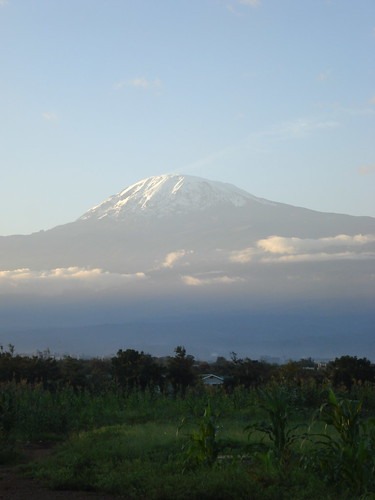
Kilimanjaro in Tanzania is not only a breathtaking natural wonder but also a vital habitat for diverse flora and fauna. The mountain’s varied ecosystems, ranging from lush rainforest at its base to alpine desert near the summit, support numerous species that are unique to this region. These species contribute significantly to the biodiversity of Tanzania and attract researchers and eco-tourists alike.
- Flora: The lower slopes are covered with dense rainforests featuring trees like mahogany and Hagenia, along with ferns and orchids. As altitude increases, vegetation transitions to moorlands with giant heather and groundsels. The summit’s barren environment is dominated by hardy mosses and lichens capable of surviving extreme conditions.
- Fauna: Kilimanjaro hosts animals such as elephants, buffalo, and leopards in its forested zones. Birds like the Malachite kingfisher and lammergeier vultures are commonly seen. Higher elevations are inhabited by species adapted to cold, including the Kilimanjaro shrew and snow parrots.
Conservation efforts on Kilimanjaro are critical for preserving its unique biodiversity. Various organizations work to combat deforestation, illegal hunting, and the impact of tourism. National park authorities enforce strict regulations, promote sustainable trekking practices, and engage local communities in conservation programs. These initiatives aim to protect the mountain’s delicate ecosystems while enabling responsible eco-tourism that benefits local populations.
Tourism and Economic Impact
Tourism plays a significant role in the economic development of regions around the world, and Kilimanjaro, Tanzania, is no exception. As one of Africa’s most iconic landmarks, the mountain attracts thousands of visitors annually, boosting local businesses, creating jobs, and generating revenue for the community. The influx of tourists not only highlights the natural beauty of Kilimanjaro but also underscores its importance as a vital component of Tanzania’s economic landscape.
Visitor Statistics
Kilimanjaro, Tanzania, is one of Africa’s most popular tourist destinations, attracting visitors from around the world who seek to experience its iconic summit and diverse landscapes. Tourism surrounding Kilimanjaro significantly contributes to the local and national economy by generating revenue through park fees, guided tours, accommodation, and other related services.
In recent years, visitor statistics have shown a steady increase, with over 50,000 trekkers reaching the summit annually. This growth reflects the rising global interest in adventure tourism and the unique appeal of Kilimanjaro’s challenging climb and breathtaking scenery. The influx of tourists not only boosts income for local communities but also promotes cultural exchange and environmental awareness.
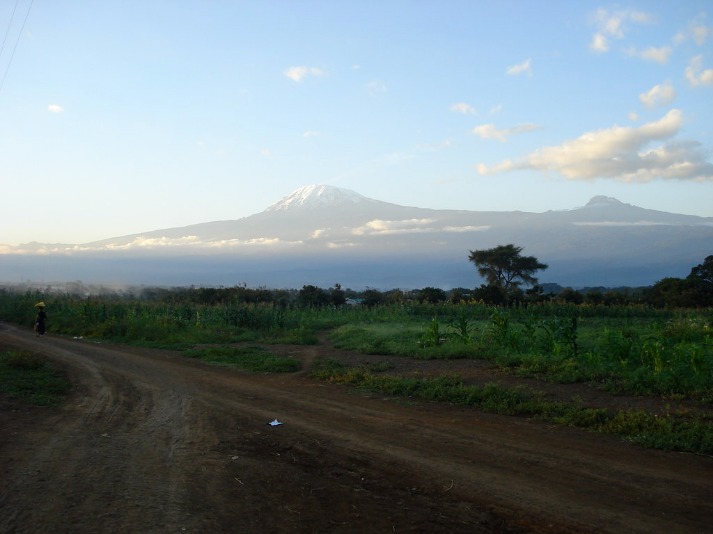
Moreover, the economic impact extends beyond tourism-related activities, fostering job creation in hospitality, transportation, and conservation sectors. Organizations and government agencies are working to ensure sustainable tourism practices to preserve Kilimanjaro’s natural beauty while maximizing its positive economic effects for Tanzania.
Tourist Attractions beyond the Summit
The Kilimanjaro region in Tanzania significantly boosts the local economy through tourism, attracting thousands of adventurers and nature enthusiasts each year. Beyond the summit itself, the surrounding attractions such as Kilimanjaro National Park, which is a UNESCO World Heritage Site, offer diverse wildlife, lush rainforests, and scenic landscapes that draw visitors from around the world. These tourist activities generate substantial revenue for local communities, creating jobs and supporting small businesses like hotels, guides, and transport services. The influx of visitors also encourages investment in infrastructure, further enhancing the region’s appeal as a top travel destination.
Local Community Benefits
Tourism to Mount Kilimanjaro in Tanzania significantly boosts the local economy by generating revenue through various channels such as guiding services, accommodations, and transportation. This influx of visitors creates job opportunities for local residents, fostering economic development in surrounding communities.
Additionally, tourism encourages the preservation of natural and cultural heritage, promoting community pride and identity. Local communities often benefit from improved infrastructure, healthcare, and educational facilities funded by tourism-related earnings, enhancing their overall quality of life.
Moreover, community-based tourism initiatives empower residents to participate actively in tourism activities, ensuring that the economic benefits are shared more equitably. This involvement helps foster sustainable development and encourages the conservation of Kilimanjaro’s unique environment for future generations.
Challenges of Tourism
Tourism around Kilimanjaro, Tanzania, significantly contributes to the country’s economy by generating revenue through entrance fees, guided tours, and accommodation services. This iconic mountain attracts thousands of adventurers and nature lovers every year, boosting local businesses and creating employment opportunities. However, the influx of tourists also presents challenges such as environmental degradation, waste management issues, and pressure on local communities and resources. Maintaining a balance between promoting tourism and protecting the natural beauty of Kilimanjaro remains essential to ensure sustainable development that benefits both visitors and residents.
Climbing Regulations and Safety
Climbing Mount Kilimanjaro in Tanzania offers a thrilling adventure for outdoor enthusiasts, but safety and adherence to regulations are essential for a successful and secure ascent. Understanding the climbing regulations and safety protocols helps protect both climbers and the delicate environment of this iconic mountain. Proper preparation and awareness ensure that everyone can enjoy the breathtaking views and the achievement of reaching Uhuru Peak responsibly.
Permitting and Registration
Climbing Mount Kilimanjaro in Tanzania requires adherence to established regulations and safety protocols to ensure a secure and enjoyable experience. It is essential for climbers to follow national park rules, respect the environment, and use authorized guides and operators to maintain safety standards. Proper planning, acclimatization, and awareness of altitude sickness are crucial components of a safe ascent.
Obtaining the necessary permits and registering with Tanzanian authorities is a mandatory step before ascending Kilimanjaro. Climbers must secure a park entry permit, which helps monitor and manage the number of visitors, and is often included in the cost of organized treks. Registration typically involves providing personal details and current health status, ensuring that all climbers are adequately prepared and insured.
Guidelines for Climbers
Climbing Kilimanjaro in Tanzania requires adherence to specific regulations and safety guidelines to ensure a successful and secure ascent. It is essential for climbers to be well-prepared, physically fit, and knowledgeable about the route and potential risks involved. Prior to the climb, obtaining proper permits and training with a certified guide company is highly recommended.
Always follow the instructions provided by your guides and support team, including respecting designated trail paths and environmental protection rules. Climbers should acclimatize properly to prevent altitude sickness, hydrate regularly, and listen to their bodies. Carry adequate gear, clothing, and emergency equipment, and ensure all safety devices are in working order.
Maintaining a steady pace, avoiding overexertion, and taking scheduled breaks are crucial in managing altitude-related challenges. In case of any health concerns or emergencies, promptly communicate with your guides and follow established rescue procedures. By adhering to these regulations and safety protocols, climbers can help preserve the natural beauty of Kilimanjaro while ensuring a safe and memorable experience.
Risks and Safety Measures
Climbing Mount Kilimanjaro in Tanzania requires strict adherence to regulations and safety protocols to ensure a safe and successful ascent. Proper planning, guidance, and awareness of risks are essential for all climbers embarking on this challenging adventure.
Climbing regulations on Kilimanjaro often include obtaining necessary permits, choosing licensed guides and operators, and respecting local environmental rules to minimize ecological impact. It is crucial to stay on designated trails and avoid littering to preserve the mountain’s pristine environment.
Safety measures involve acclimatization schedules to prevent altitude sickness, carrying appropriate gear, and staying hydrated. Climbers should be prepared for sudden weather changes and be aware of the signs of altitude-related illnesses. Hiring experienced guides not only enhances safety but also provides valuable knowledge about the mountain’s conditions and emergency procedures.
The risks associated with Kilimanjaro climbing include altitude sickness, severe weather, falls, and exhaustion. To mitigate these dangers, climbers must pace themselves, listen to their bodies, and communicate any health issues promptly. Proper physical fitness and mental readiness significantly contribute to a successful and safe ascent.
Environmental Concerns and Preservation
Kilimanjaro in Tanzania stands as a majestic symbol of natural beauty and ecological significance. As the highest peak in Africa, it draws countless explorers and adventurers, but it also faces growing environmental concerns. Preserving this iconic mountain and its surrounding ecosystems is crucial to maintaining biodiversity and ensuring that future generations can continue to experience its awe-inspiring landscape. Efforts to balance tourism and conservation are essential to protect Kilimanjaro’s unique environment from the impacts of human activity and climate change.
Effects of Climate Change
Kilimanjaro in Tanzania serves as a powerful symbol of environmental concern and the critical need for preservation. As Africa’s highest peak, it draws many visitors each year, but increasing tourism and climate change threaten its fragile ecosystem. Rising temperatures have led to the retreat of glaciers on the mountain, altering local water sources and impacting both wildlife and nearby communities. These changes highlight the urgent need to implement sustainable practices to preserve Kilimanjaro’s unique environment for future generations. Addressing the effects of climate change is essential to maintaining the mountain’s ecological integrity and protecting the diverse flora and fauna that depend on its pristine habitat.
Protection Policies
The summit of Mount Kilimanjaro in Tanzania stands as a symbol of natural beauty and ecological significance. As the highest free-standing mountain in Africa, it hosts unique ecosystems that range from lush rainforests at its base to arid alpine zones near the summit. Protecting this pristine environment is crucial to maintaining biodiversity and the health of surrounding ecosystems. Environmental concerns, including deforestation, climate change, and human encroachment, threaten the delicate balance of Kilimanjaro’s landscape.
In response to these challenges, Tanzania has implemented various preservation and protection policies aimed at conserving Kilimanjaro’s natural resources. These include regulated tourism practices, environmental impact assessments for new developments, and conservation programs supported by government and international organizations. Efforts are also made to combat illegal activities such as poaching and illegal logging, which jeopardize the region’s biodiversity. Ongoing initiatives emphasize sustainable tourism practices that allow visitors to appreciate Kilimanjaro’s grandeur while minimizing ecological footprint, ensuring this natural wonder remains intact for future generations.
Community Involvement in Conservation
Kilimanjaro, Tanzania, stands as one of the most iconic natural landmarks in Africa, drawing adventurers and nature enthusiasts from around the world. However, the increasing number of visitors has raised significant environmental concerns, including habitat degradation, waste management issues, and the impact on local flora and fauna. Preserving this majestic mountain is crucial to maintain its ecological integrity and cultural significance for future generations. Community involvement plays a vital role in conservation efforts, as local communities are often the stewards of the land and best positioned to implement sustainable practices. Initiatives that promote eco-tourism, environmental education, and community-led conservation projects are essential to balancing tourism growth with environmental preservation on Kilimanjaro.

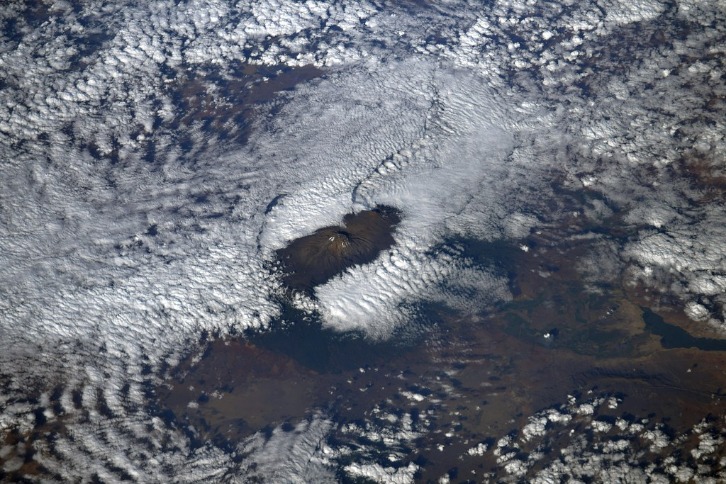
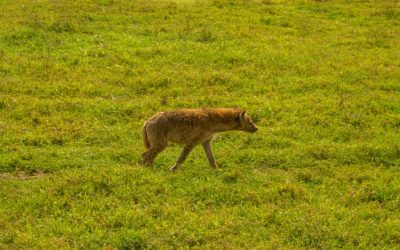
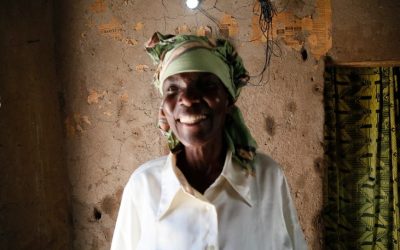
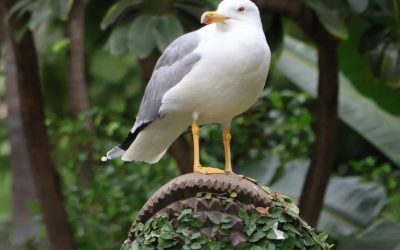
0 Comments